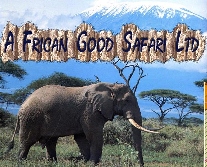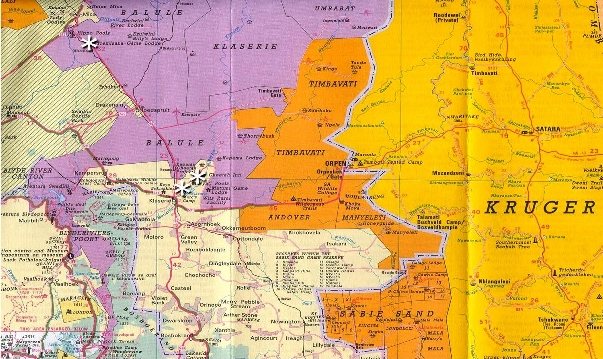
|
|



South Africa |
South Africa, our gateway to Africa. The rainbow nation with its many many attractions from vineyards to deserts to African bush. |
In Private Game Reserves in South Africa's largest wildlife area! This protected area in total, stretches over more than five million acres, almost all of which have no fences or man-made barrier inside their borders and which includes within, some 750,000 acres of private game reserves all located contiguously. This allows unhindered movement of the entire population of all animals across this vast area, including elephant, rhino, lion, leopard, cheetah, African buffalo, giraffe, hippo, zebra, wild dog, and many species of antelope, to mention a few, and whose movements within this area are determined and dictated only by nature. This is home to some 147 species of mammals, 114 species of reptiles, 34 of amphibians, 507 of birds and 336 species of trees. !! Know for personal service, wonderful cuisine, and accommodation ranging from the rustic to the quite luxurious, but all quite up-market, we will take you to what is unrivalled in South Africa in the diversity of it's life forms, and watched over by management and staff who are world leaders in advanced environmental and wildlife management practices and policies. Game drives by sunlight and starlight with trained armed rangers and trackers, as well as daytime walks, will ensure that your experience of Africa will be, to use the cliché, 'up close and personal'. The experience, training and education in bush craft and wildlife in general, are readily shared by the trackers and rangers. Guests must observe and abide by all rules of the reserve and carefully follow all instructions and advice from their rangers and trackers, especially when on foot in the bush and in the vicinity and proximity of dangerous game (and where it is safe to assume that you always are, even when not apparent or obvious) With camps and lodges carefully located, and set among acacia bushveld, open grass plains and riverine forest, these locations are kept quite personal and private by limiting each camp or lodge to only a few guests, some deliberately using no electricity, but relying on paraffin lamps, & candlelight . Climate and Terrain. Summers are rainy and hot and occurs roughly October -March; with April to September being dry and cooler, with warm days and cool to cold nights. During the rains the game is more scattered, due to many more water holes, with the bush thicker and grass higher. This is a malaria area and precautions must be taken; even before your arrival in Africa. By the late 1990's agreement was reached to extend further eastwards, crossing the border into the Republic of Mozambique, with final agreements reached in 2002 with South Africa, Mozambique a& Zimbabwe which will lead to the establishment of an even more immense and vast area, the 'Greater Limpopo Transfrontier Park'. Trees Flowers Birds - the environment. Some of the more common trees are (by their common name) Flame Thorn, Umbrella Thorn, (and many other Acacia trees), some false thorns, Torchwood, Brown and Red Ivory, Tree Wisteria, Wild Syringa, Sjambok Pod, different Bushwillow (Combretum), Jackal Berry, Transvaal Candelabra, Euphorbia, The Figs, Sausage Tree, False Marula, Wild Date Palm, Camel's Foot, Transvaal Teak, Marula, Tamboti, Natal Mahogany and Buffalo Thorn. The de-balkanisation and return to open and un-fenced areas, along with the grasses are some of the main ecological underpinnings of this ecosystem, and there are some300 species of grass endemic here. This is a vast subject in itself including the roles played by hoofs and horns as animals graze, as well as their migration or limited & restricted movements. |
While searching for the big five and others it is easy to overlook the smaller marvels of nature. Larger trees in full colour though are hard to miss, such as the Round leaf Teak with yellow blooms, the Sjambok Pod with long hanging pods and bright green foliage, the Transvaal Teak with corky bark and green flat round pods having an early bloom of yellow flowers, Baobabs and their large white flowers, the Wild Pear with cream or pink flowers, the Lucky Beans with their scarlet blooms, etc, Alot of trees produce their flowers before the leaves appear and also have a scent attraction which may be quite noticeable. Many small flowering plants may also be noticeable, in mauve/blue, yellow, and scarlet hue. Remember; looking for the little things, you will spot the bigger things as well !! Birdlife is prolific with maybe 90 % of all S. African raptors and vulture species found. As well as the 'Big Six' of the Lappet-faced Vulture, Saddle-billed Stork, the Martial Eagle, Pels Fishing Owl, the Kori Bustard (Africa's largest flying bird) and the Ground Hornbill; also the White-backed night Heron; the African Finfoot; the Black rumped Button Quail; and what is termed the Beautiful Three - the Knysna Loerie, Purple-crested Turac and the Narina Trogon. The Peregrine Falcon (Falco peregrines) is considered rare. Most of the southern African storks can be seen, and all but one are Red Data Book species (mainly of rare status). The White Stork (Ciconia ciconia) is also a South African endemic. Also worth noting is that all 12 owl species of South Africa are found. The most southern population of the Taita Falcon (a relatively recent new phenomenon locally) falls well within the area and can now be seen fairly frequently by experienced birders. |